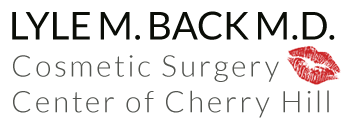Special Alert – Many Medication Prices Are About To Drop!
Big news – over the next year or so, several of the world’s most popular and top-selling medications have patents which are set to expire. This will open the door for their generic equivalents to be sold, bringing about a substantial plummeting in prices for many commonly needed medications! Are you one of the millions of people in the U.S. that currently uses one or more of these medications for the treatment of a variety of common conditions such as high blood pressure, high cholesterol/triglycerides, asthma, diabetes, or depression? Then good financial news for you is on the way! In 2010, the average brand name prescription drug had a consumer cost of approximately $198.00 per month compared to the average generic prescription drug cost of about $72.00 a month. That’s nearly a 70% savings! The average co-pay for a generic drug is about $6.00 compared to about five times that amount – $30.00 – for the average co-pay for the brand name version of the very same drug! The commonly prescribed medication Protonix still goes for about $170.00 a month – its generic twin recently became legally available at a cost of only $16.00 a month. Lipitor at $150.00/month, Plavix at $200.00/month, and Diovan at $125.00/month are all on the current “patent expiring chopping block”. It’s predicted that these drugs could drop in cost to as little as $5.00 a month or even less in the upcoming months. This could represent a savings of nearly $2,000.00 a year for just one person taking just one of these commonly needed medications! Historically, the generic competition is able to drastically slash costs and pass tremendous saving on to patients, typically decimating the sales of the brand name drugs. Over the next 5 years, this will be happening to about 120 different medications!
Why this seemingly compressed bonanza of expiring patents? Several years in a row of a healthy economy helped pump lots of money into the pharmaceutical industry’s research and development teams, resulting in the creation of some “blockbuster” widely used drugs that brought in billions of dollars over the past 20 years. But the economy nose-dived, belts were tightened, and employees lost their jobs. R & D became another casualty of corporate expense trimming. The “bubble” had popped – the latest, the greatest and the next newly approved wonder drug that would bring in the next wave of billions was just not in the works. Living quite well off their laurels has worked for years, but now that the competition is being given the green light, what will happen? In preparation for the patent expirations, some of the big boys have not so subtly used a somewhat standard trick and raised their prices over the past couple of years by as much as 20% to soften the economic blow about to come. The impact of the generic drug availability is quite clear. Brand name drugs will typically lose 90% of their previous yearly revenues within the 12 – 24 months following the release of the generic! It is estimated that generic medications save the U.S. health care system approximately 1 billion dollars… every three days! We will all eagerly watch for our small part of that – reflected in the upcoming savings on our prescriptions over the next couple of years!
Dr. Lyle Back is originally from New York City, receiving his medical and surgical training at Rutgers Medical School, Cooper Hospital – University Medical Center, and Ohio State. He is Board Certified in General Surgery (ABS) and Plastic Surgery (ABPS) and is a Fellow of the American College of Surgeons. He specializes in the full range of the most modern and state of the art cosmetic surgery procedures for the body and non-surgical cosmetic enhancement techniques available today.
